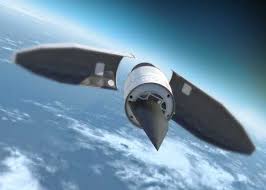Warnings of a Russian hypersonic weapon that the U.S. can’t defend against may have had you running for the bomb shelter last week. But what, exactly, is this weapon, and how does it work?
Russian President Vladimir Putin first announced the hypersonic weapon, code-named Avangard, in a speech in March. Last week, U.S. intelligence sources told CNBC that the weapon had been successfully tested a number of times and could be operational by 2020. […]
Russian efforts to develop hypersonic glide vehicles are explicitly aimed at evading U.S. missile defense systems, said Pavel Podvig, an independent analyst who specializes in Russia’s nuclear arsenal. [Could the US Stop Nuclear Weapons?]
Current U.S. defenses are designed to take out conventional warheads from ICBMs on predictable ballistic trajectories while they are still in space; these defenses are not well suited to intercept weapons coming in on a high-speed glide in the atmosphere, Podvig said. And unlike traditional warheads, the vehicles will be capable of maneuvering around defenses.
But Podvig said it’s not clear if the weapons really provide useful additional military capabilities. “It has been described as a weapon in search of a mission,” he told Live Science. “My take is, you don’t really need this kind of capability. It doesn’t really change much in terms of ability to hit targets.” […]
Read More © Live Science










